Internet \in"ter*net, n. A deeply misunderstood technology upon which we increasingly depend
Julian Oliver & Danja Vasiliev
local networks
Last week we learned that a computer "network" is two or more computers connected together so that they can exchange information. Most "local networks", like the kind we experimented on last week, use the electromagnetic spectrum to connect with each other and share information wirelessly through the air. This is likely the method we're most familiar with, but for various reasons, in certain parts of the world, isn't always the most practical....
Inspired by these sorts of networks artists like Aram Bartholl, Dennis de Bel and Roel Roscam Abbing have created their own "offline" network projects.

Meshenger by Dennis de Bel and Roel Roscam Abbing,
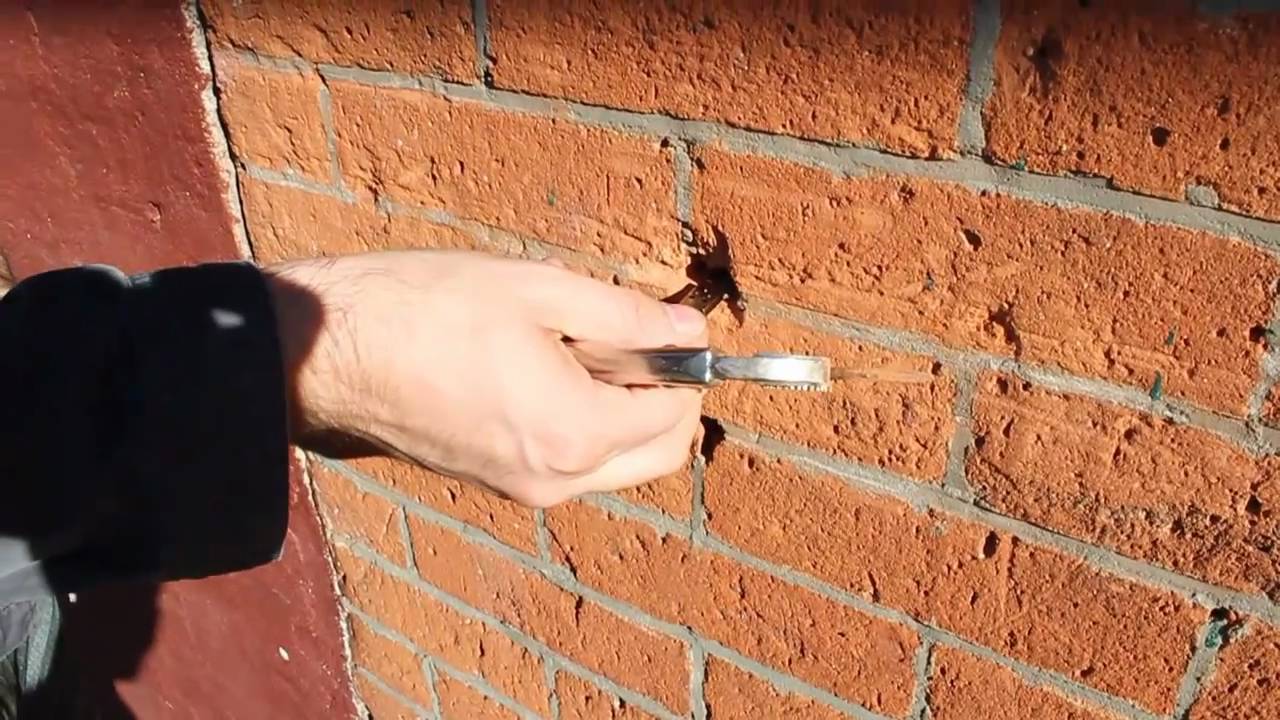
Dead Drops (a peer-2-peer "offline" network) by Aram Bartholl
a network of networks
The Internet is the great masterpiece of human civilization. As an artifact it challenges the pyramid, the aqueduct, the highway, the novel, the newspaper, the nation-state, the Magna Carta, Easter Island, Stonehenge, agriculture, the feature film, the automobile, the telephone, the telegraph, the television, the Chanel suit, the airplane, the pencil, the book, the printing press, the radio, the realist painting, the abstract painting, the Pill, the washing machine, the skyscraper, the elevator, and cooked meat. As an idea it rivals monotheism
Virginia Heffernan
the Internet is a network of networks which spans the globe. Rather than using WiFi or cats, these networks are predominantly connected together using cables. When you send an email, share a post on social media, watch a stream or visit a webpage data is being sent back and fourth between your computer and another which may be halfway across the planet.

Interactive 3D map of the Internet
Visit a website in your browser, right-mouse click the page and "View Source." This is the HTML code, the file itself, that just traveled the world to reach your computer, but where did this data come from? Let's map the journey it took across the Internet...
IP Addresses
As we disucssed last week, when you sign on to a local WiFi (or ethernet) network the router assigns you a "local" IP address, the router itself has a public IP address, this address is a unique address on the Internet. When your request packets leave your local network, your IP address is swapped with your router's address, this way the response knows to find it's way back to you. If you'd like to see what your public IP address is (ie. your router's IP address) do a web search for "what's my IP address"
Every computer connected to the Internet has an IP addresses, including the computers running the servers which host the files, and other data, we experience on our devices, like the HTML file we just looked at when we viewed the source of a website.
We rarely type IP address of these other computers into our browser address bars, this is because a server could optionally register a "domain name" on the Internet's Domain Name System (DNS). This is like a giant phone book (or books) for the Internet that match names to numbers. Here you can find a list of all the The Root Servers for the DNS.

You can look up any domain name's IP address by using the nslookup command in your terminal. If you're using a Mac or Linux computer, open your Terminal application (or the Command Prompt on Windows) and run nslookup example.com replacing "example.com" with your website.
locating the server
Once you know your destination IP address, you'll need to map that to a physical address. Do a web search for "IP address to location" or "IP to geo" and you'll come across various different services that can translate an IP address into GPS coordinates. I prefer to use https://ip-api.com/ because it not only gives me the GPS coordinates, but also tells me the name of the organization who owns that IP address (a helpful piece of information when creating your travelogue). Use an online mapping service to navigate to those GPS coordinates and try to find where exactly the site is hosted. The GPS coordinates aren't always precise, it'll get you to the general area, but you'll likely need to search the map for "data centers" in the area to try and find the building where your identified organization (hosting the website) is a tenant at. Large data centers often (though not always) have many different companies renting space in the data center for their servers. This means the building your looking for might not have the same name as the organization for which the IP address belongs.
It may be in a part of the world you hadn't expected, having traveled the distance to your computer faster than any boat, train or plane could have. The speed of travel can often make the Internet feel smaller than it is, everywhere and nowhere. Artists like James Bridle and Charles Broskoski have created projects that help bring this to light, and raise questions about the Internet which are only possible when we see it for what it actually is.
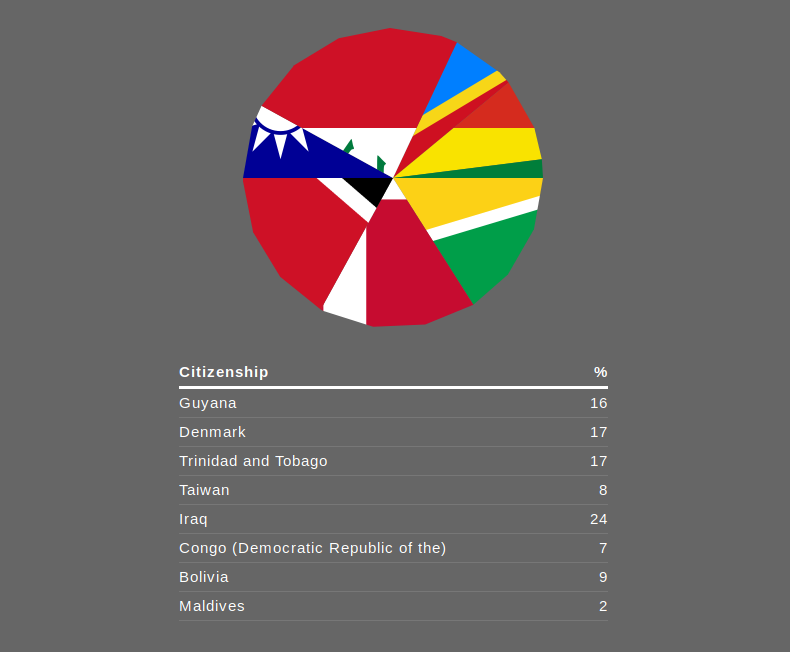
Citizen Ex by James Bridle
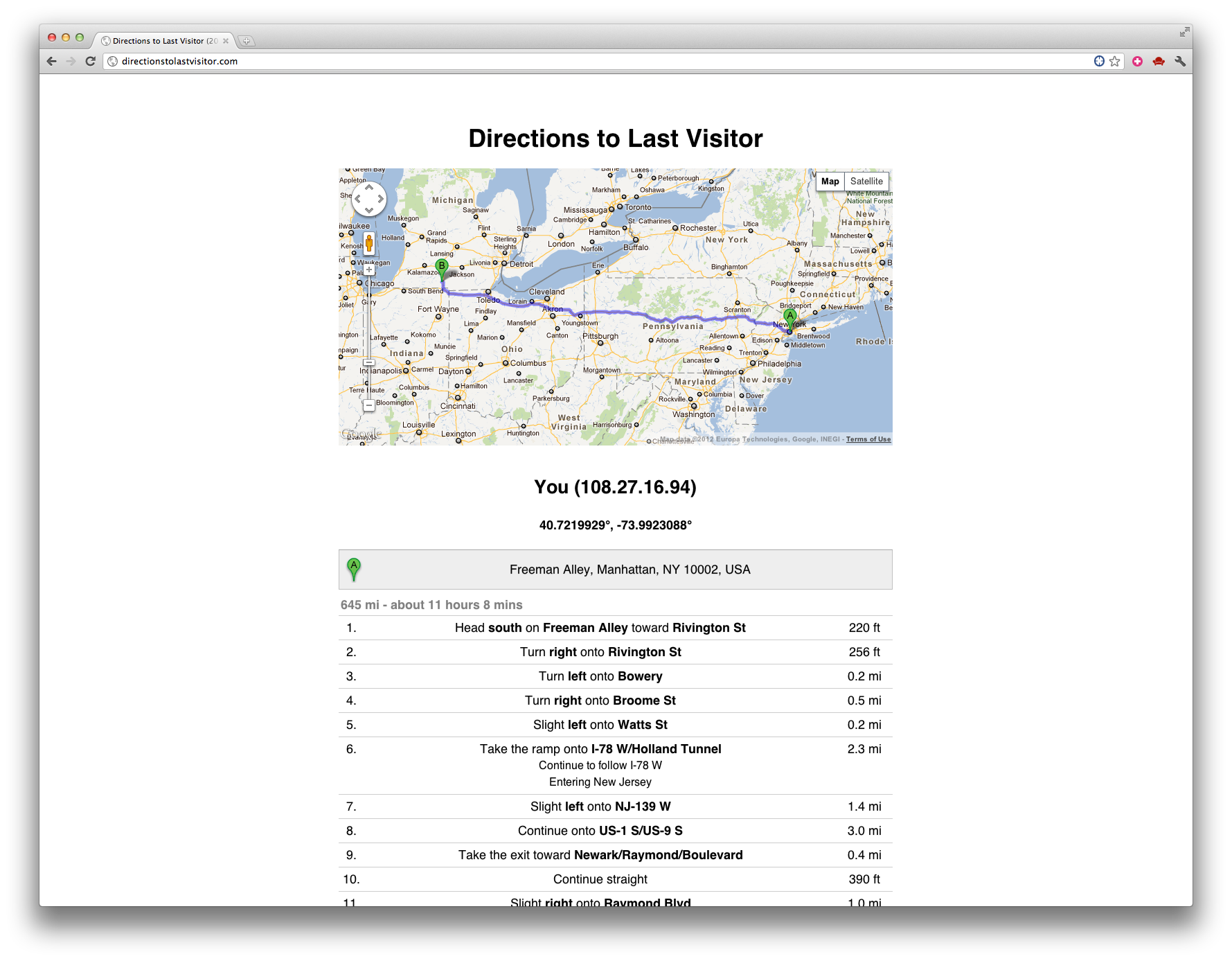
Directions ot Last Visitor by Charles Broskoski
tracing the data packet's journey
On a sunny morning at 7:45:03, one Internet packet is born. 60 bytes weight, with just one simple mission in life – to get to the place called 173.252.120.6. Even though this does not sound like an exciting mission in life, things that happen in the next 1 second are pretty exciting. His journey starts with a fast 7ms jump, 5 meters away to the box called home router. Over the attic, where he passes through the switch where all the cables from the building meet, he jumps down to the street and into the underground cable that brings him to the main city router in Novi Sad. With a speed of 30.600.000 km/h he runs for 10 ms to Belgrade, to the SBB TelePark building.
SHARE LAB
Next we'll need to chart the journey from our IP address to the IP address of the computer hosting the requested website. On a Mac or Linux computer, open your Terminal again (or the Command Prompt on Windows) and run traceroute -I 255.255.255.255 (or tracert 255.255.255.255 on Windows), replacing "255.255.255.255" with your destination's IP address.
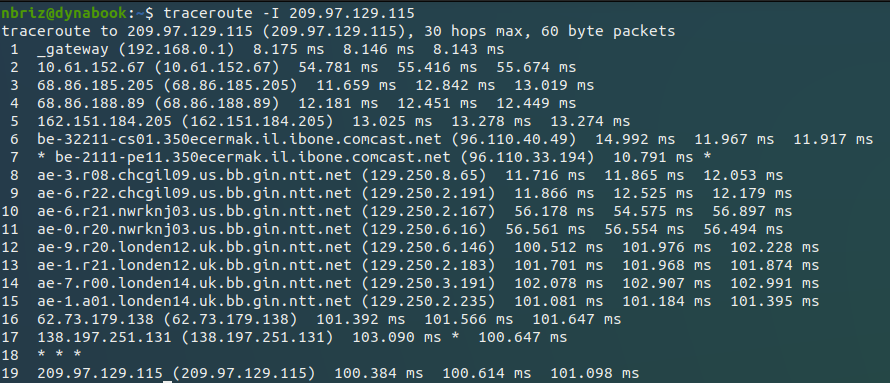
The traceroute application will start to list the IP addresses of each "hop" (or router) your packet takes on it's journey. Once you have your list of hops, look up each IP address like you did before to find the GPS coordinates of each and find them on the map. The IP addresses along the way are likely going to be Internet exchange points or "colocation centers", or "carrier hotels". These are all names for large data centers where different networks meet and connect with each other to exchange Internet traffic. Use those terms (in addition to "data center") to try and find the buildings (near the GPS coordinates) where the hops might have taken place.
It's important to note that the traceroute application isn't perfect. It doesn't actually trace a direct route so much as send "pings" (a tiny packet to a router that echos back) to and from each router along the path. Because your packet doesn't necessarily take the same exact journey each time (every new Web request finds the quickest path across the Internet to it's destination at that moment) the list of IP address returned by the traceroute in a way reflects a combination of alternative routes the packet may have taken. So, what you'll need to do is run the traceroute a few times (maybe 4 or 5) keeping track of the list of IP addresses and their corresponding GPS coordinates. Compare the different results, disregard any anomolies (IP addresses that only ever showed up once) and make your best guess as to what a likely journey may have been.
Between each "hop", each stop at along the packet's journey, the data traveled across cables, initially probably the cables of your local Internet service provider (or ISP), like Comcast for example...
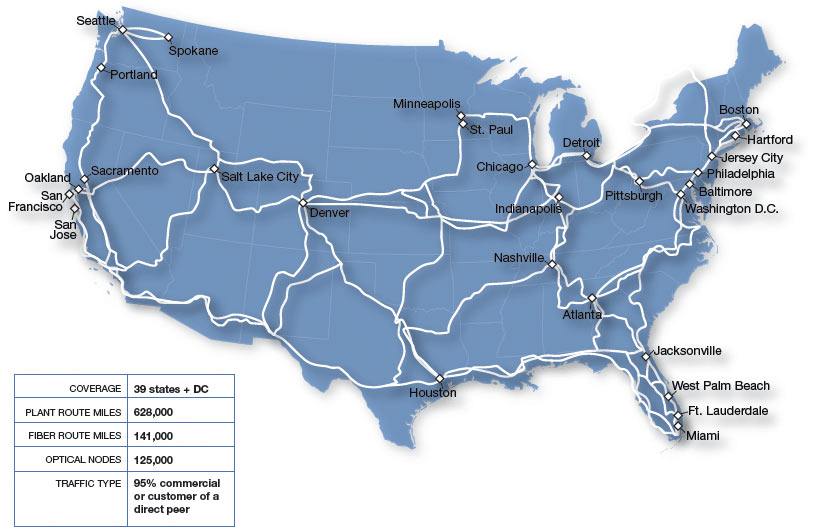
If there's ever a hop between two different continents, then it's likely your packet fount it's way to the shoreline, likke this one in Canada...
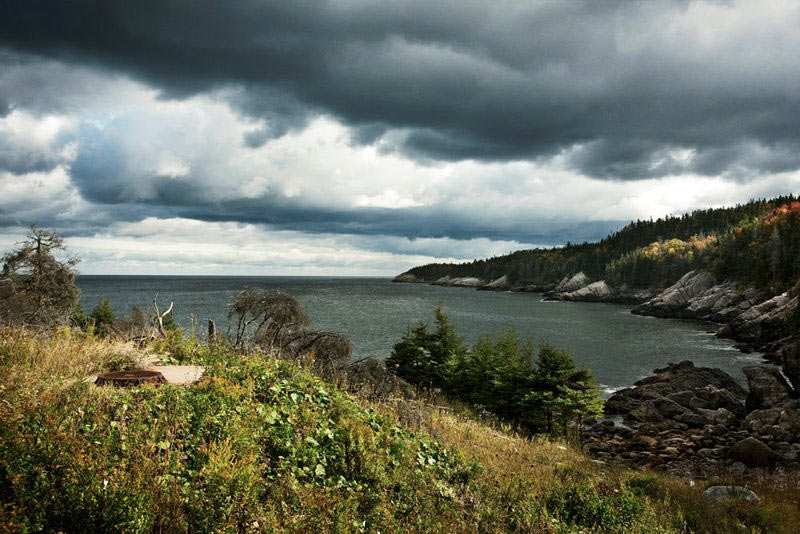
"This modest indentation on the Canadian coastline is a major Internet landmark, a sort of Ellis Island of the Web: It’s where a submarine cable owned by Hibernia Atlantic comes ashore."--Andrew Blum
...before taking a journey through an under sea cable. Use this map of submarine cables to try and identify which one.
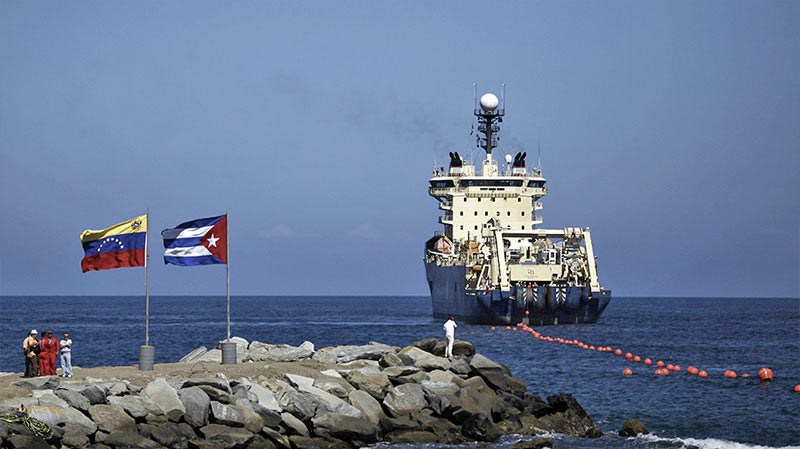
This undersea cable its on its way to Cuba from Venezuela
After traveling across the ocean at nearly the speed of light, our packet of data make landfall on another shoreline, here's a photo of me (^__^) when i stumbled upon an Internet landing cable on the shore of St. Thomas in the Caribbean...
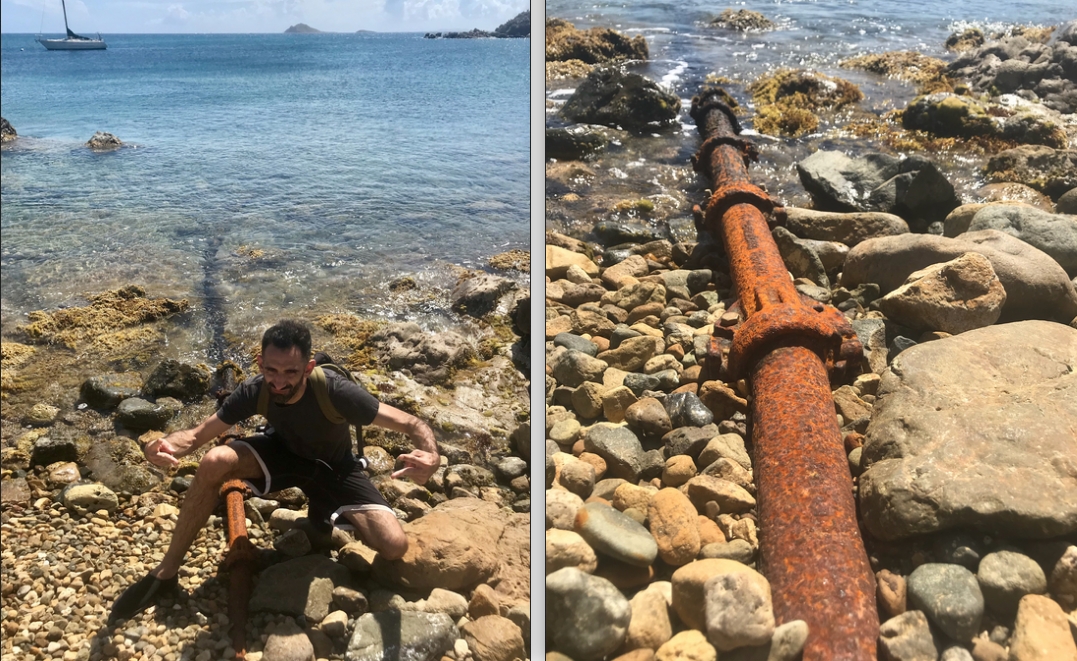
Artists like Ingrid Burrington and Trevor Paglen have researched these cables, their history and their politics to better understand, and help others see this network we so heavily depend on...
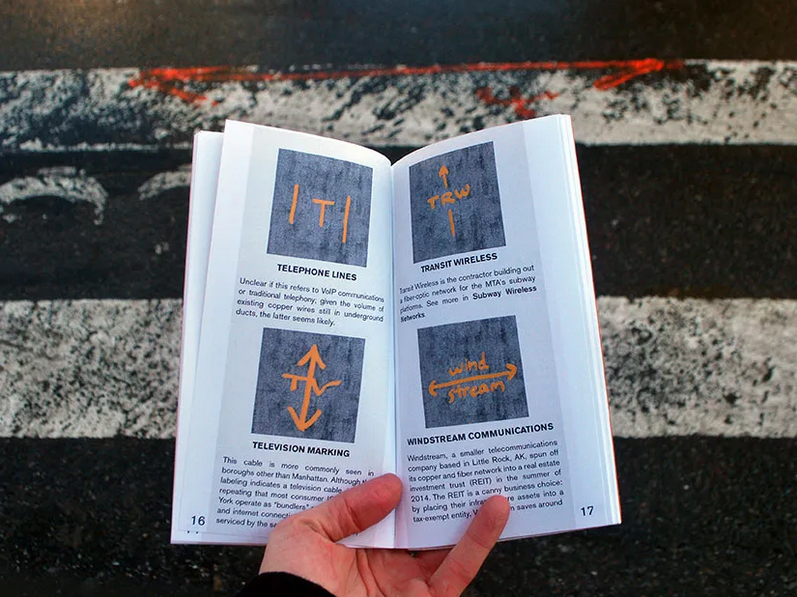
Networks of New York: An Internet Infrastructure Field Guide (2015) by Ingrid Burrington
Extra Research
The Internet is often described as a "cloud", an amorphous entity that is everywhere and nowhere at the same time. This sort of magical thinking does us a disservice as artists. If we hope to make meaningful work with the Internet that also speaks to living in a world mediated by the Internet, it would help if we knew what it really was.
The Internet is actually a very real, very physical thing. You can touch it, you can smell it, it has a "delicious old odor" as Leonard Kleinrock put it. The Internet exists in time and space, and came into existence at specific time[s] and place[s]. Maybe it started in "deep military secrecy" within a "Cold War think-tank" as science fiction writer Bruce Sterling writes in his "Short History of the Internet". Or maybe "ground zero" for the "birth place of the Internet" was actually a dingy university classroom in California, as filmmaker Werner Herzog narrates in his existential documentary "Lo and Behold, Reveries of the Connected World." Or maybe it didn't happen in the United States at all? Maybe it started in a British Laboratory? Or maybe it was a French Laboratory?
Where did the Internet come from? When was it created? Who created it? And, perhaps most importantly, Why? To answer these questions...
- Watch the first 10mins of Werner Herzog's documentary Lo and Behold, Reveries of the Connected World (You may need to pay to view the entire doc on YouTube, but I've uploaded an excerpt of the first 10mins here)
- Read the History Channel's very brief article The Invention of the Internet as well as Bruce Sterling's A Short History of the Internet (written in 1993 just before the explosion of the World Wide Web)
- Watch my (18mins) video The Internet: invented for nuclear war?
- For those looking to deep dive, check out this documentary from 1972 (just as the Internet was being invented) called Computer Networks - The Heralds Of Resource Sharing, and for an even deeper dive into primary sources check out J.C.R. Licklider's Man-Computer Symbiosis as well as Bob Taylor's and Paul Bran's oral histories.
What is the Internet, literally, physically. Where is the Internet? What's it made of, how does it work? To answer these questions...
- To get a sense of the Internet at the "global" level watch this (7.5min) video A Journey To The Bottom Of The Internet by Nat & Lo
- If you'd like to dive deeper into this part of the Internet check out this interactive map of Internet undersea cables (or this 3D version!).
- To see where these sea cables go when they reach land watch this (8min) Motherboad video.
- ... then at "national" level watch the short (10mins) doc Communication: Bundled, Buried and Behind Closed Doors by Ben Mendelsohn
- If you'd like to explore other buildings like the one featured in that doc check out this interactive map of Internet exchange buildings.
- ... then at a "local" level watch this (12min) doc on Diana Nucera and the Detroit Community Technology Project's Equitable Internet Initiative
- For a bit more on broadband access issues in the United States watch this (7min) Vox feature on Why 23 million Americans don't have fast internet